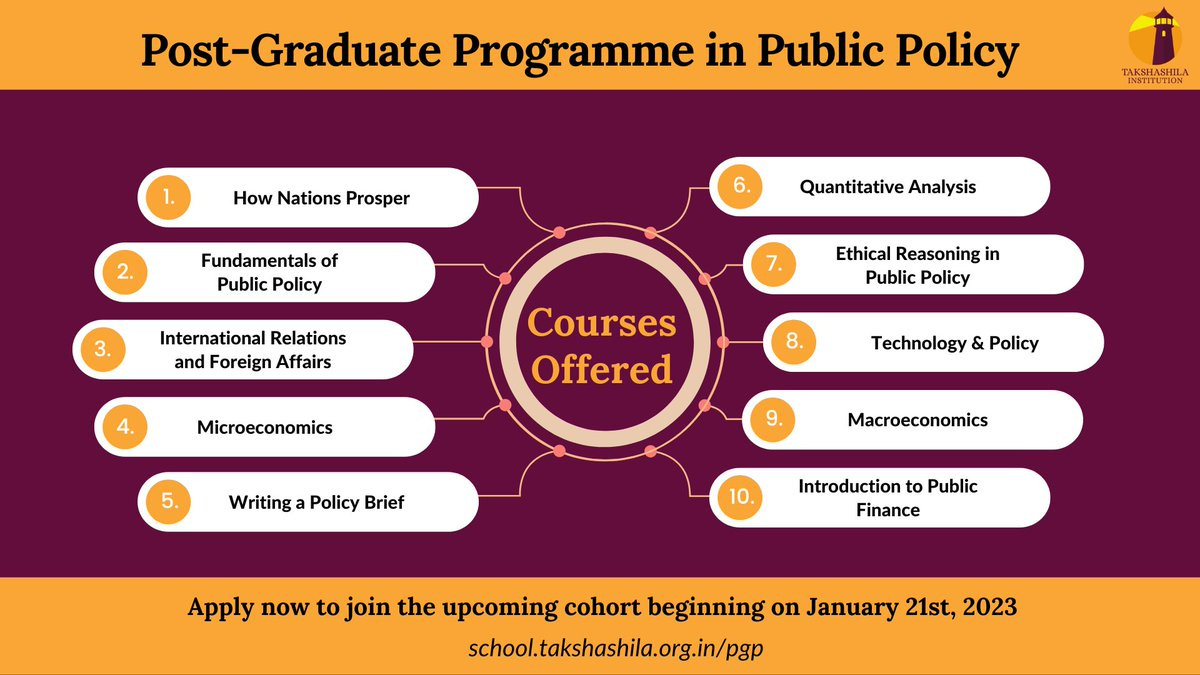Contribute to the Open Tech Strategy for India
Dear Reader,
Welcome to the last edition of Takshashila Dispatch for 2022!
We are delighted to share the release of the draft version of ‘An Open Tech Strategy for India’. The document seeks inputs for policy solutions to boost an open tech ecosystem in India.
Also, we bring to you our latest on the India-China dynamics - trade & competition, maritime military strategy, and implications from China’s new Covid wave. And we offer some insights on why you should care about public policy, especially if you are a member of your resident welfare association.
A Draft Open Tech Strategy for India
We published the first version of ‘An Open Tech Strategy for India’ last week. The contributors to this report include Apar Gupta, Arjun Gargeyas, Bharath Reddy, Kailash Nadh, Nitin Pai, Pranay Kotasthane, Rushabh Mehta, Saurabh Chandra, and Venkatesh Hariharan.
The strategy seeks to achieve strategic autonomy, economic growth, technology leadership, and skill development using open-source technologies. The document recommends a range of policy initiatives for software, hardware and standards that will nurture a sustainable open tech ecosystem:
This draft document has been created for the purpose of consultative feedback and discussion. We invite contributors and authors to write to us with your comments at research@takshashila.org.in.
India-China: Trade, Competition & Self-Reliance
In an article for The Quint, Manoj Kewalramani writes on the shifts in the India-China relationship and how India is taking the battle to the economic domain, and the implications thereof:
For instance, even before the standoff began in Eastern Ladakh in April 2020, the Indian government made prior approval mandatory for investments from the countries sharing land borders with India. Following the Galwan Valley clash, decisions were taken to ban Chinese apps on national security grounds and exclude Chinese vendors from India’s 5G ecosystem, and there has also been an intensification of investigations into Chinese enterprises.
In addition, there has been a growing discussion across the policy ecosystem in India about the potential of Chinese economic coercion, particularly with regard to critical sectors, and an emphasis on the need to boost local manufacturing. The Indian government’s Production Linked Incentive (PLI) schemes across 14 sectors with the aim of creating national manufacturing champions, is part of this effort.
Also, in last Thursday’s episode of All Things Policy, Manoj is joined by Pranay Kotasthane to discuss India’s PLI schemes, and the opportunities, costs, and challenges of the India-China trade imbalance:
Navy Can Shift Balance of Power in India’s Favour
Indian and Chinese troops had a face-off in the Tawang sector in Arunachal Pradesh earlier this month. While the encounter was short and Indian Army soldiers managed to clear the intruders, Lt. Gen. Prakash Menon argues that from a strategic perspective, India’s maritime ability can shift the balance of power vis-a-vis China in the medium to long run:
A strategically defensive posture against China and Pakistan in the continental domain must be counterbalanced by offensive capability in the maritime domain — it could shift the balance of power. This not only calls for a rebalancing of the Army from the west to the north, a process that is probably underway, but also the restructuring of its offensive combat capability housed in the Strike Corps. The capture of large parts of territory can no longer be a realistic political objective. The Navy needs offensive capability embedded in submarines, aircraft carriers, and surface ships.
All of these are extremely costly, have long periods for development and manufacturing, and may need foreign technological assistance. It certainly cannot be achieved by the 17.8 per cent allocation of the defence budget to the Navy.
China’s Covid Wave & Implications for India
China is facing a massive public health crisis fueled by the BF.7 subvariant. Should India be worried about the Covid wave in China? Dr. Harshit Kukreja answers in this thread:
Also, read his piece from the Times of India where he gives more details on what India needs to do at this juncture:
What Connects Resident Welfare Associations & Public Policy Education?
For most urban Indians, particularly those living in large townships, their resident welfare associations (RWA) are likely to be their first opportunity to exercise governance and engage in policymaking.
In an exciting All Things Policy episode, Manoj Kewalramani talks to Sowmya Nandan and Malathi Renati about the challenges of grassroots governance by RWAs and how sound public policy education can help understand and improve this residents’ participation and welfare:
Pre-Order Now - Missing in Action: Why You Should Care About Public Policy
2022 - The Year in Fiction: Reading List by Nitin Pai
Nitin Pai brings to you a list of 41 works of fiction that he read or reread and 17 that he is yet to finish, all rated and classified for you to pick from:
Applications for PGP Programme are Open
The Post-Graduate Programme in Public Policy (PGP Programme) is a 48-week multi-disciplinary, specialised programme, designed for students who wish to gain a deeper understanding of the theoretical and empirical approaches to public policy.
The PGP Programme is suitable for working professionals in the public policy space or looking to explore a career in public policy while pursuing current occupations. Prior work experience of 2 years is a desirable criterion for admission. The PGP programme will equip students with the necessary skills of policymaking, analysis, persuasion and communication in their desired career choice.
That’s all from us this week. Wish you a very happy new year!







